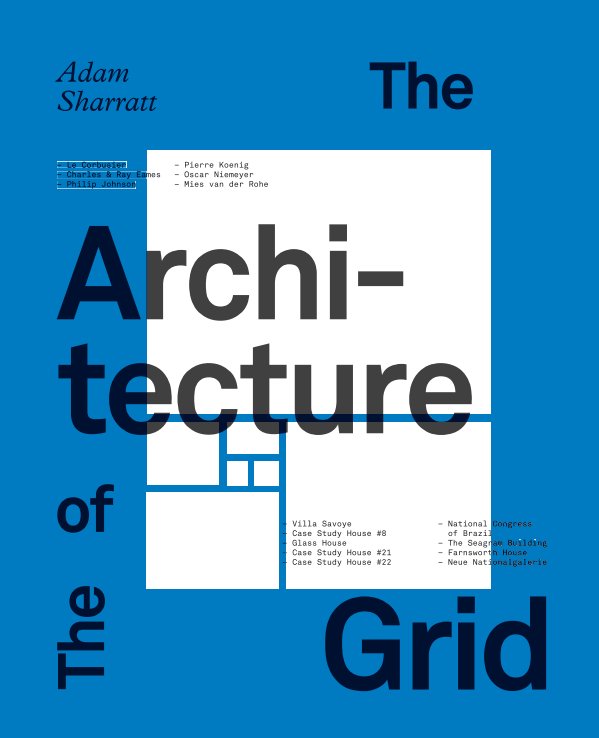About the Book
At the turn of the 20th Century a new wave of artists and designers started rejecting previous notions of realism, ornament and romanticism in what we would come to know as ‘modernism’. Be it a reaction to bourgeois ideals, the horrors of war, enlightenment or the industrial revolution, school’s such as The Bauhaus started teaching and moulding a new generation where (to use a well-worn saying) form followed function.
At the centre of this was the adoption of the grid. Just as designers such as Müller-Brockmann and Tschichold we’re establishing modular grids as the bedrock of 20th century graphic design, architects were doing the same with buildings. Unburdened by technological restraints as industrial developments saw the introduction of steel-framed buildings, architects proposed structures with previously unthinkable rationality and form.
Grids in architecture were by no means first introduced in this period (there are theories that The Acropolis is built upon the guidelines of the golden ratio), but whether it be Le Corbusier’s use of his Modulor system or followers of Lloyd Wright’s Japanese influence there had never been a movement that sculpted with such order.
This book looks at nine examples of this thinking in some of it’s purest forms.
At the centre of this was the adoption of the grid. Just as designers such as Müller-Brockmann and Tschichold we’re establishing modular grids as the bedrock of 20th century graphic design, architects were doing the same with buildings. Unburdened by technological restraints as industrial developments saw the introduction of steel-framed buildings, architects proposed structures with previously unthinkable rationality and form.
Grids in architecture were by no means first introduced in this period (there are theories that The Acropolis is built upon the guidelines of the golden ratio), but whether it be Le Corbusier’s use of his Modulor system or followers of Lloyd Wright’s Japanese influence there had never been a movement that sculpted with such order.
This book looks at nine examples of this thinking in some of it’s purest forms.
Author website
Features & Details
- Primary Category: Architecture
-
Project Option: 8×10 in, 20×25 cm
# of Pages: 80 -
Isbn
- Hardcover, ImageWrap: 9781389702112
- Publish Date: Aug 24, 2017
- Language English
- Keywords Architecture, Art, Design, Graphic, Photography, Grid, Illustration, Typography
See More

